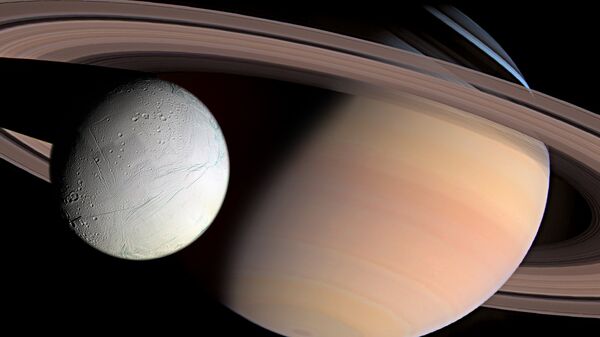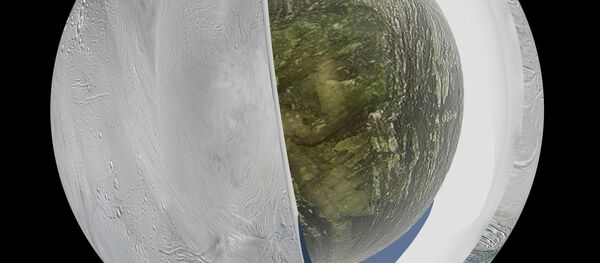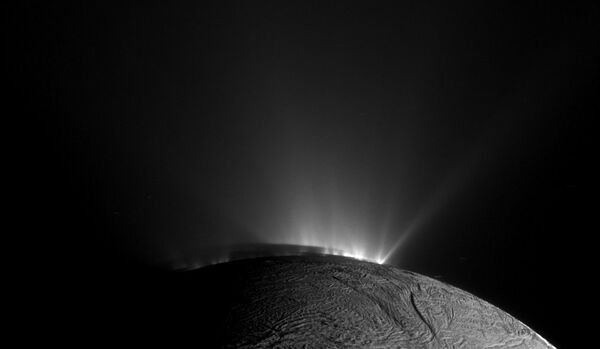NASA astrophysicists discovered that the magnitude of the moon’s slight wobble while orbiting Saturn is only possible if the outer ice is not frozen solid to the rocky core, indicating the presence of a global ocean.
Prior analysis of Cassini data proposed the presence of a large lens-shaped sea of liquid water underneath Enceladus’s southern polar region. Gravitational observations during flybys indicated that the subterranean sea could be all encompassing, and new research now confirms this without a doubt.
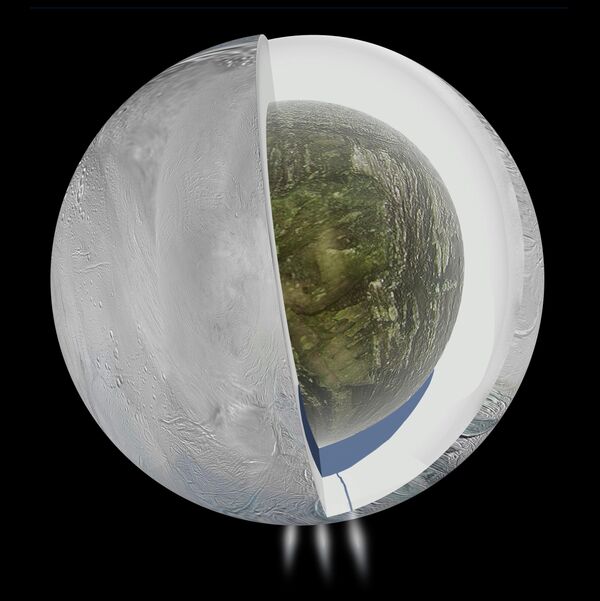
Published in the journal Icarus, findings show that the water vapor, ice particles and simple organic molecules Cassini has observed with a Composite Infrared Spectrometer (CIS) since 2005 spraying out of rocky vents near Enceladus’s South Pole was being fed by a massive reservoir of liquid. The orbiter analyzed images and data for over seven years, mapping craters and Enceladean tectonics to measure changes in geologic activity and the moon’s overall rotation.
"This was a hard problem that required years of observations, and calculations involving a diverse collection of disciplines, but we are confident we finally got it right," said Peter Thomas, lead author of the study and member of the Cassini imaging team at Cornell University.
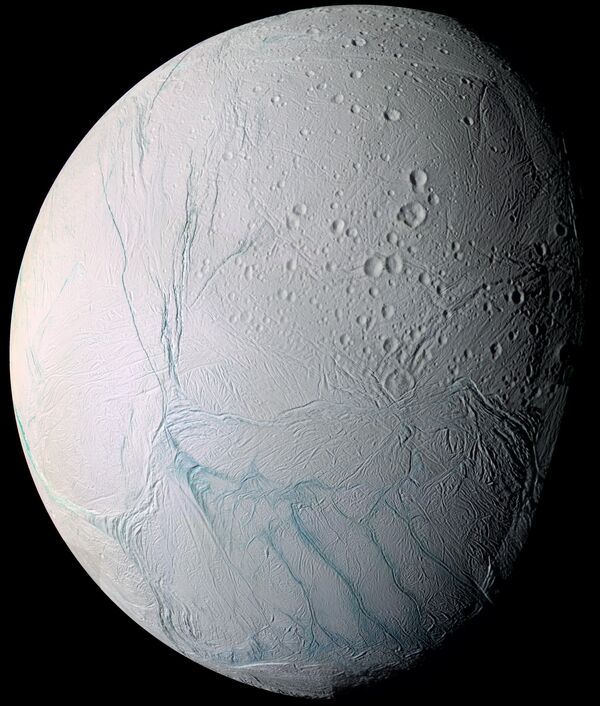
A tiny but measurable wobble has been observed with Enceladus as it orbits Saturn. Since the moon is not perfectly spherical, and because it doesn’t orbit at a constant speed during portions of its trip around Saturn, a subtle rocking of the moon occurs. Knowing this, the team took the the measurement of the wobble, known as a libration, and compared it to different models of expected subterranean composition. Expected connectivity of the crust and core would not have accounted for anywhere near to enough of the wobble.
"If the surface and core were rigidly connected, the core would provide so much dead weight the wobble would be far smaller than we observe it to be," said Matthew Tiscareno, a Cassini participating scientist at the Search For Extraterrestrial Intelligence (SETI) Institute. "This proves that there must be a global layer of liquid separating the surface from the core."
It is still not clear what keeps Enceladus’s subterranean ocean from freezing. One hypothesis proposes that Saturn’s gravity could be causing the tidal forces of the ocean to generate more heat than was previously thought, thus contributing to the Yellowstone-like geysers that dot the planet.
Spectrometry of the cryonic geyser mist measured during one of Cassini’s flybys into the cloud found the presence of water, methane, organic molecules and other simple hydrocarbons. The presence of all of these make Enceladus an attractive candidate to be home to some kind of extraterrestrial aquatic life.
Cassini will make an incredibly close flyby with Enceladus on October 28th, when it will pass through an expected plume of cryovolcanic activity just 30 miles above the Enceladean surface.

